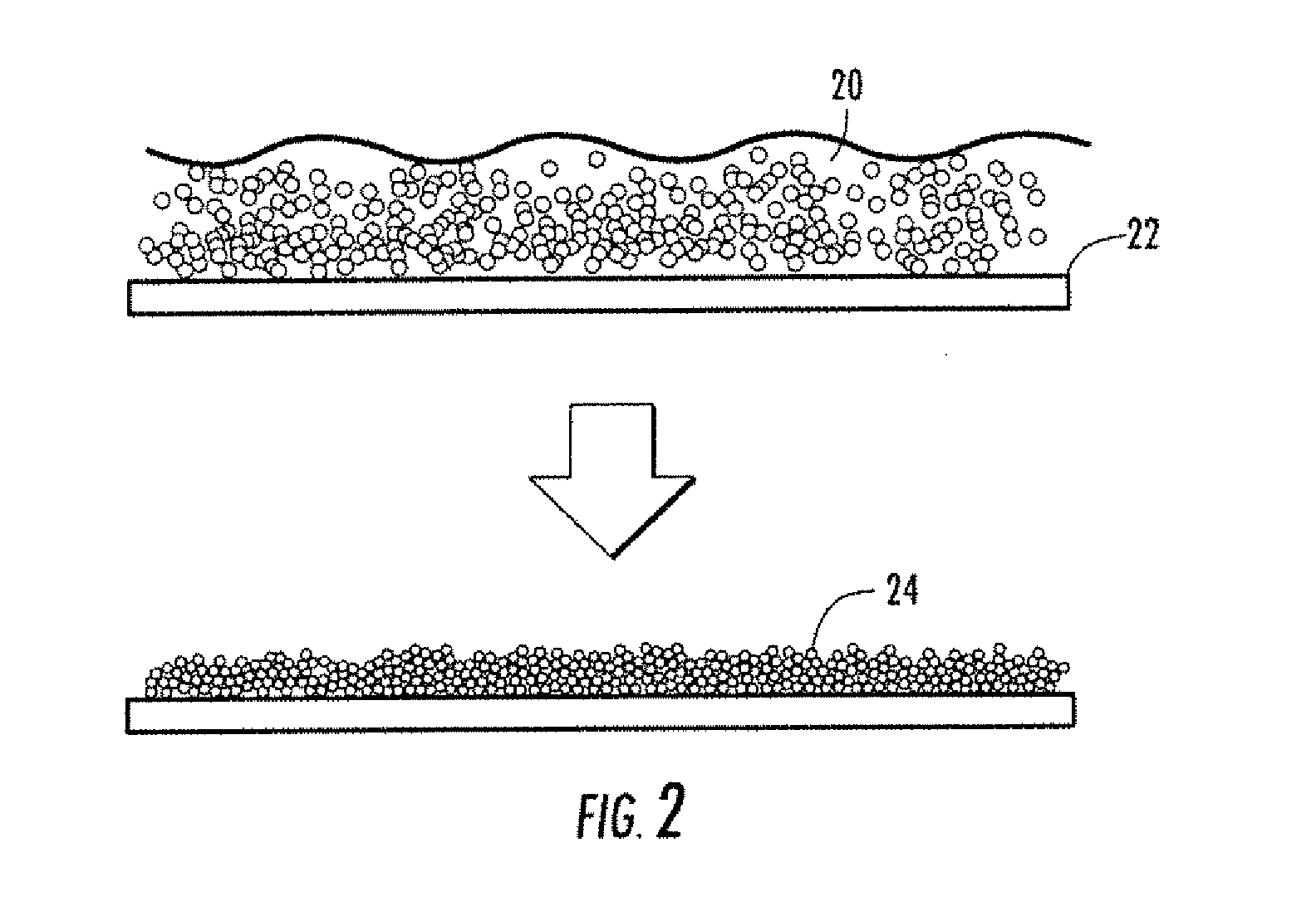Method for producing nanoparticle solutions based on pulsed laser ablation for fabrication of thin film solar cells
a solar cell and nanoparticle technology, applied in the direction of manufacturing tools, sustainable manufacturing/processing, final product manufacturing, etc., can solve the problems of high production cost of this method, complex parameter control, lowering the conversion efficiency of solar cells, etc., and achieves the effect of improving film quality and speeding up the process
- Summary
- Abstract
- Description
- Claims
- Application Information
AI Technical Summary
Benefits of technology
Problems solved by technology
Method used
Image
Examples
Embodiment Construction
[0019]FIG. 1 schematically illustrates a laser-based system for producing nanoparticles of complex compounds in a liquid in accordance with the present invention. In one embodiment a laser beam 1 is received from a pulsed laser source, not shown, and focused by a lens 2. The source of the laser beam 1 can be a seed laser or any other laser source as known in the art provided it has the pulse duration, repetition rate and power level as discussed below. The focused laser beam 1 then passes from the lens 2 to a guide mechanism 3 for controlling movement of the laser beam 1. The guide mechanism 3 can be any of those known in the art including by way of example piezo-mirrors, acousto-optic deflectors, rotating polygons, vibration minor, and prisms. Preferably the guide mechanism 3 is a vibration mirror 3 to enable controlled and rapid movement of the laser beam 1. The guide mechanism 3 directs the laser beam 1 to a target 4. The target 4 is made from the desired solar light absorbing co...
PUM
| Property | Measurement | Unit |
|---|---|---|
| speed | aaaaa | aaaaa |
| frequency | aaaaa | aaaaa |
| diameter | aaaaa | aaaaa |
Abstract
Description
Claims
Application Information
 Login to View More
Login to View More - R&D
- Intellectual Property
- Life Sciences
- Materials
- Tech Scout
- Unparalleled Data Quality
- Higher Quality Content
- 60% Fewer Hallucinations
Browse by: Latest US Patents, China's latest patents, Technical Efficacy Thesaurus, Application Domain, Technology Topic, Popular Technical Reports.
© 2025 PatSnap. All rights reserved.Legal|Privacy policy|Modern Slavery Act Transparency Statement|Sitemap|About US| Contact US: help@patsnap.com



